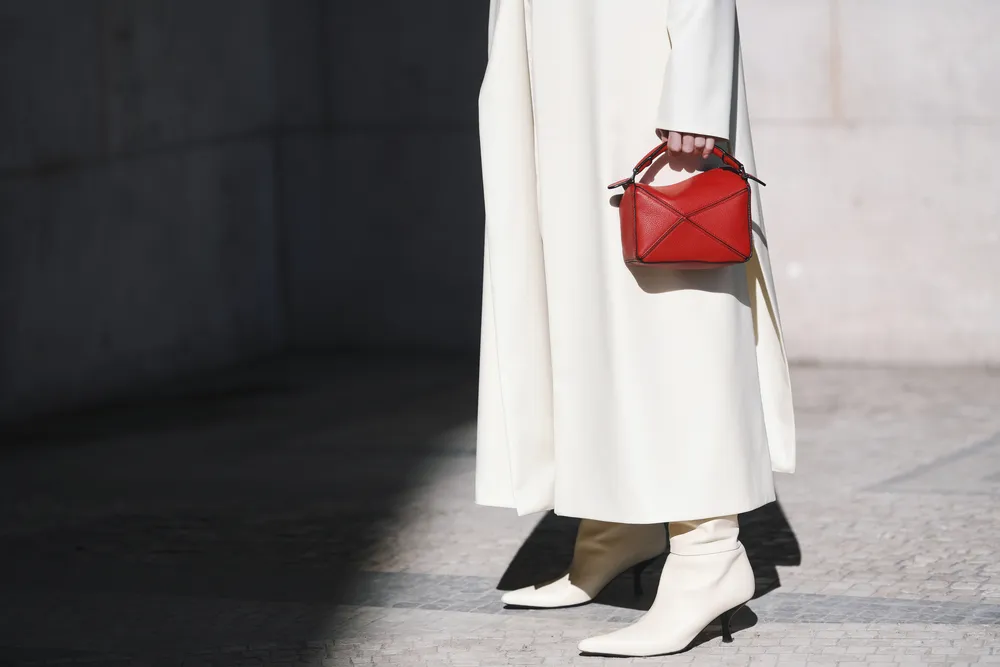10 Stock Photo Cliches You Must Stop Using Today
A basic image search will give you millions of options, and some of those images are so overused that you immediately recognize them as cliches. This is perhaps more evident with stock photography platforms, and cliches like a woman laughing alone with a salad, a big happy family, and a hooded hacker are now a classic.
In addition to being overused, cliches in stock photography are simply irrelevant and outdated. In fact, the only place for these types of stock photos is in a dedicated article about cliches. But we’ll explain why in a bit.
We’re here to update everyone on some new stock photo cliches, the classic ones, and of course the Depositphotos favourites. Sometimes knowing which images to avoid can go a long way in making a good first impression – be it for your website, blog, ad, or even book cover.
10 outdated stock photo cliches
№1. Woman laughing alone with a salad
Surfing stock photography platforms, you have definitely stumbled upon a photo of a weird woman laughing alone with a salad. Bet you have a lot of random questions in your mind every time you look at it. Why is this woman so happy and since when did salad become funny? What did the salad tell her?
In 2019, there’s a trend for authenticity and this stock photo cliche is definitely outdated. The Depositphotos library has over 125 million visuals, you can find more creative alternatives for someone enjoying some veggies.
For instance, in our latest “Healthy food” photo collection, we feature trendy and relevant images like green smoothies, people enjoying fresh fruit, avocado toasts, and quinoa salads. These are the visuals you should use if you’d like your project to bear actual fruit.
№2. Big happy family
Do you remember the last time you had dinner with your family? Did it look like this? Probably not. Although laughter, some fun, and polite small talk are prevalent, there are better-suited visuals to translate the atmosphere of a family sharing a meal.
In 2019, authenticity is an ultimate trend, so why use images with emotions that seem forced?
№3. Abstract 3D elements
At the beginning of 2000, when computers have become more affordable and accessible, these kinds of graphics became viral. The reason for the widespread use of these types of images is because they’re convenient to communicate concepts.
Today, technological evolution reached unprecedented heights. Tools and features of editing apps like Photoshop and it’s alternatives allow creating more sophisticated visuals so that would target visual learners and communicate concepts and ideas when photography isn’t enough.
№4. Tough choice
Concepts such as the creative process, a tough choice, and Internet of Things are not easy to visualize. Yet, the challenge of finding the right image does not change the fact that visual content should be of high quality and not tacky.
The image of a man at the crossroads of an unhealthy and healthy lifestyle is quite tacky. What makes this so is the little effort that’s been put into post-production, and the unnatural colors that cheapen the image.
If you have trouble visualizing a dilemma, better find a more creative approach. On social media, you can create a poll featuring two contrasting images. On a blog or a website, you can create a gallery or divide a text into two different sections. Let your creative juices flow to get better results.
№5. Hands with a laptop
This cliché appeared not so long ago but has already taken over the world. The issue with these types of stock photos is the obvious nature of the portrayal of ‘someone’ using a laptop. It is like the universal solution to illustrate a freelancer, a designer, a businessman, or a hacker. However, it does not say much to your audience except for the fact that these are hands with a laptop.
If you’d like your brand, project or idea to differ from thousands of others, try to appeal to your target audience with more precise concepts, solid ideas, and images that enrich and support your other content.
№6. Boss stereotypes
Did you ever find yourself so busy, that a dozen people surrounded you and tried to force you to do your tasks because you, as a boss, didn’t care enough to attend to them? Although this image suggests it, people in charge hardly ever find themselves in similar situations. In truth, a boss will quietly multitask and get a lot done, making this outdated representation of a busy bee far from ‘authentic’.
More often than not, stock photography plays into conceptual representation to illustrate things in a more literal way. This approach is an old one, but we certainly still enjoy corny images and what they imply. If anything, they provide us with a good laugh.
№7. Fictional networking
Networking is an integral part of professional and everyday life for many. It implies having coffee with people, attending events, organizing dinners, chatting in the office hall or messaging on social media. However, it does not imply manually pooling networks, as depicted on the image above.
Once again, we stumble on an image that poorly communicates a concept, but it’s certainly easier to just pull up an image like this one because networking is another tough concept to portray. Keep in mind that networking can be anything, and a simple image of people engaged in a conversation would be a better alternative.
№8. Happy women shopping
Another type of photo that is a cliché is happy women shopping. It shows the invented world instead of real for many reasons.
It is not so often when shopping brings joy, and you certainly don’t carry around dozens of bags with a smile on your face, ready to pause and give photographers your best angle. You are also exhausted of walking miles of distance and the only thing you can think of is getting a piece of chocolate cake and cappuccino in a cosy cafe, not a huge shopping centre.
№9. The hooded hacker
A hooded man in the photo resembles a dementor who came for your soul rather than a hacker who quietly does his things. Part of the problem is probably the fact that not everyone knows hackers and has a vague understanding of what it is they actually do.
As a result, a stereotype is born. Although this might come as a surprise, but hackers look just like us (and know a great deal more about the tech world), but they certainly don’t sit in dark rooms with projections of neon code around them.
№10. Cheerful seniors
Imagine, you do sports, travel a lot, laugh all the time, and don’t need a nap during the day. You devote time to your hobbies, your grandchildren, your children, your neighbours, your friends, pets and sleep only four hours. You are 70 and you are super vigorous.
Sounds amazing but let’s face the reality. Not many 25-year olds are as cheerful as those seniors on the image. It is a cliché and it only annoys older people. A relevant strategy here is to use more natural visuals – seniors that pursue everyday activities and show emotions instead of fake smiles.
It shouldn’t come as a surprise that the quality of the content matters indeed. Whether you choose a low-resolution image or decide to target the audience with the types of photos that have become clichés, your project will be equally poor.
With supporting visual content, your audience should find insights. Instead of a woman laughing alone with a salad, choose a beautiful flatlay of healthy food like avocado, quinoa or apples. To illustrate networking, download a photo of people partying or having coffee together. In other words, put more thought into ideas and invest more time in finding quality content. Think outside the box.
At Depositphotos, we can talk about stock photos clichés forever. We even had a creative project, where art photographers were to reinvent the stock photography clichés. We also made a test “Which stock photography cliché are you?”. You should definitely explore both. Promise, the results will be insightful and fun.



















